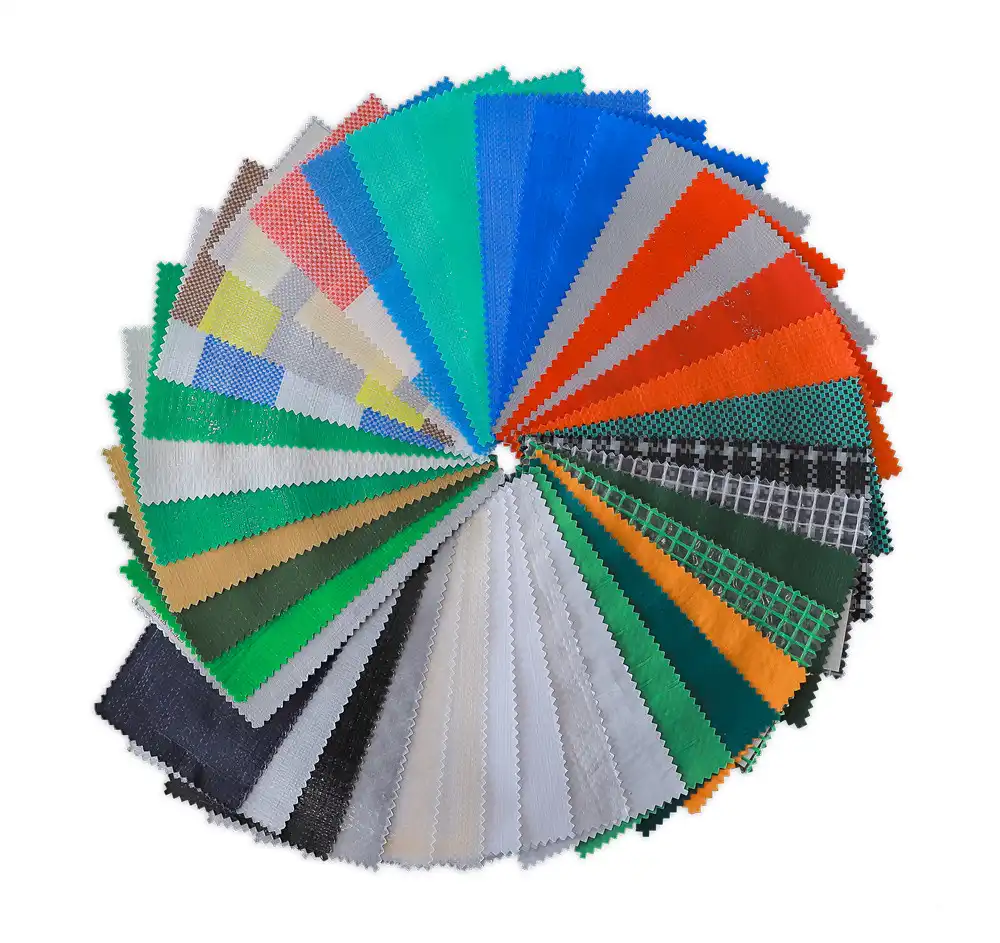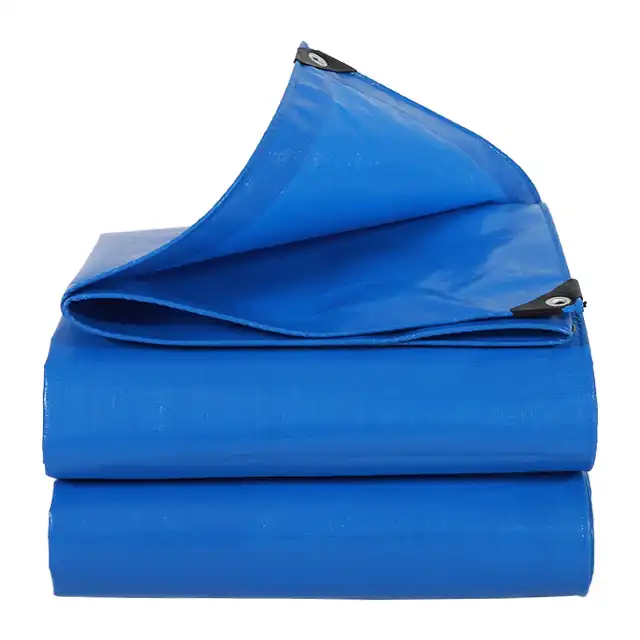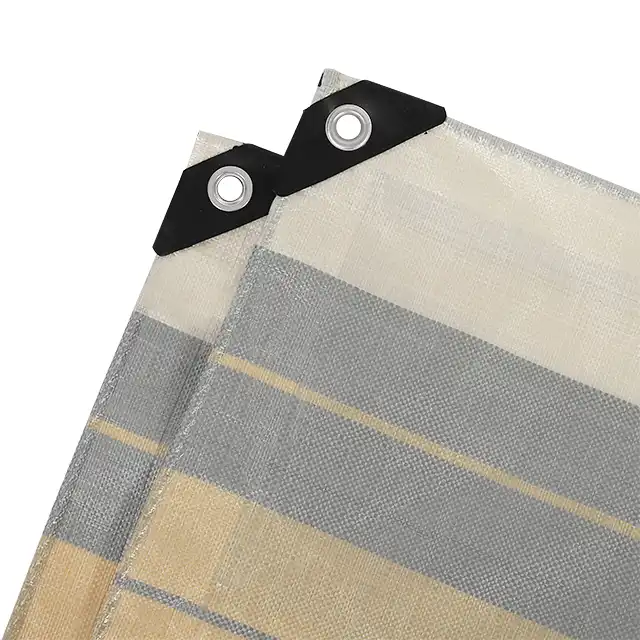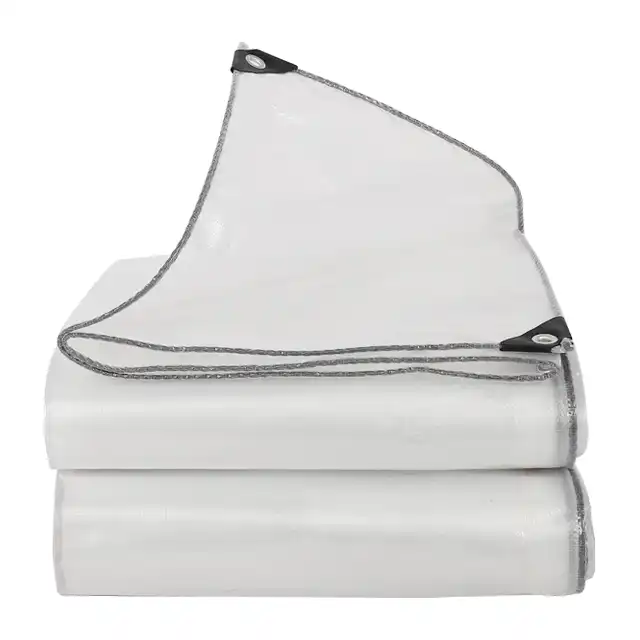Step-by-Step Operation Guide for PE Tarpaulin
Understanding the proper operation and utilization of PE Tarpaulin requires comprehensive knowledge of its characteristics, applications, and handling procedures. PE Tarpaulin represents one of the most versatile protective materials in modern industrial and commercial applications, offering exceptional durability and weather resistance. This guide provides detailed insights into maximizing the effectiveness of PE Tarpaulin across various scenarios, from basic installation to advanced maintenance techniques. Whether you're managing construction sites, protecting agricultural equipment, or securing cargo during transportation, mastering the operational aspects of PE Tarpaulin ensures optimal performance and longevity. The following comprehensive analysis covers essential procedures, quality considerations, and practical applications that professionals need to understand for successful PE Tarpaulin deployment.
Essential Preparation and Selection Criteria for PE Tarpaulin Operations
Understanding Material Specifications and Quality Standards
 Professional PE Tarpaulin operations begin with thorough understanding of material specifications that determine performance outcomes. High-density polyethylene woven fabric forms the foundation of quality PE Tarpaulin, with laminated LDPE coating providing waterproof protection on both sides. The manufacturing process involves yarn extrusion using advanced machinery capable of producing yarn thickness ranging from 400D to 2500D, ensuring optimal strength-to-weight ratios. Quality PE Tarpaulin features mesh counts between 10x10 to 14x14, with thickness variations from 7 to 12 mil depending on application requirements. UV treatment percentages ranging from 1% to 7% provide essential protection against harmful sunray exposure and color fading. Weight specifications typically range from 65gsm to 280gsm, with middle-duty applications utilizing 100gsm to 180gsm materials. These technical parameters directly influence operational effectiveness, requiring careful selection based on specific environmental conditions and load requirements. Professional operators must evaluate these specifications against application demands to ensure optimal performance and cost-effectiveness throughout the operational lifecycle.
Professional PE Tarpaulin operations begin with thorough understanding of material specifications that determine performance outcomes. High-density polyethylene woven fabric forms the foundation of quality PE Tarpaulin, with laminated LDPE coating providing waterproof protection on both sides. The manufacturing process involves yarn extrusion using advanced machinery capable of producing yarn thickness ranging from 400D to 2500D, ensuring optimal strength-to-weight ratios. Quality PE Tarpaulin features mesh counts between 10x10 to 14x14, with thickness variations from 7 to 12 mil depending on application requirements. UV treatment percentages ranging from 1% to 7% provide essential protection against harmful sunray exposure and color fading. Weight specifications typically range from 65gsm to 280gsm, with middle-duty applications utilizing 100gsm to 180gsm materials. These technical parameters directly influence operational effectiveness, requiring careful selection based on specific environmental conditions and load requirements. Professional operators must evaluate these specifications against application demands to ensure optimal performance and cost-effectiveness throughout the operational lifecycle.
Comprehensive Size and Color Selection Process
Effective PE Tarpaulin operations demand strategic size and color selection that aligns with specific application requirements and environmental considerations. Modern manufacturing capabilities allow for custom sizing up to 5.1 meters in roll width, with sheet dimensions available upon request to accommodate diverse operational needs. The absence of joints in fabric widths ranging from 1.5 meters to 5 meters ensures superior structural integrity and eliminates potential failure points during extended use. Color selection extends beyond aesthetic preferences, incorporating functional considerations such as heat reflection, visibility requirements, and environmental compatibility. Any color availability enables operators to match specific operational requirements, whether for corporate branding, safety compliance, or environmental blending. Professional operators must consider factors including UV exposure levels, temperature variations, and visual identification needs when selecting appropriate colors. The selection process should also account for maintenance requirements, as certain colors may show wear or contamination more readily than others. Strategic size selection minimizes waste during installation while ensuring adequate coverage for intended applications, ultimately contributing to operational efficiency and cost-effectiveness.
Pre-Installation Assessment and Planning Procedures
Successful PE Tarpaulin operations require comprehensive pre-installation assessment that identifies potential challenges and optimization opportunities. Site evaluation encompasses environmental factors including wind exposure, precipitation patterns, temperature fluctuations, and structural support availability. Ground conditions assessment determines appropriate anchoring methods and identifies potential drainage requirements to prevent water accumulation. Load calculations ensure selected PE Tarpaulin specifications can withstand anticipated stress factors including wind loads, snow accumulation, and mechanical stresses from covered equipment or materials. Professional operators conduct detailed measurements to optimize material utilization while ensuring adequate overlap for secure fastening. Safety considerations during this phase include identification of electrical hazards, structural limitations, and personnel protection requirements during installation. Planning procedures should incorporate weather forecasting to identify optimal installation windows and potential maintenance schedules. Documentation of site conditions and installation parameters facilitates future maintenance operations and ensures consistent performance standards. This thorough preparation phase significantly reduces installation time while maximizing operational effectiveness and safety outcomes.
Professional Installation Techniques and Best Practices
Advanced Fastening and Securing Methods
Professional PE Tarpaulin installation employs advanced fastening techniques that ensure long-term stability and performance under diverse environmental conditions. Proper fastening begins with strategic placement of reinforced grommets or eyelets, typically spaced at regular intervals to distribute stress evenly across the tarpaulin surface. Heavy-duty applications require additional reinforcement patches at high-stress points to prevent tearing or grommet failure. Tensioning procedures must balance adequate tightness to prevent flapping and sagging while avoiding over-tensioning that could lead to material failure. Professional installers utilize specialized hardware including heavy-duty tie-downs, ratchet straps, and elastic cords designed specifically for tarpaulin applications. Corner reinforcement techniques involve creating secure attachment points that can withstand concentrated stress loads without compromising material integrity. The selection of appropriate fastening hardware depends on factors including expected wind loads, installation duration, and underlying surface characteristics. Proper installation includes provision for thermal expansion and contraction, particularly important for large installations exposed to significant temperature variations. Quality fastening systems should allow for periodic adjustment and maintenance without requiring complete reinstallation.
Weather-Resistant Installation Strategies
Effective PE Tarpaulin installation incorporates weather-resistant strategies that maintain performance integrity across seasonal variations and extreme weather events. Professional installation begins with proper drainage design to prevent water accumulation that could lead to structural failure or material degradation. Slope considerations ensure effective water runoff while maintaining adequate coverage for protected areas. Wind resistance measures include proper tensioning, strategic anchoring points, and aerodynamic considerations that minimize wind load effects. Cold weather installation requires attention to material flexibility, as PE Tarpaulin maintains arctic flexibility but may require modified handling techniques during extreme cold conditions. Hot weather installation must account for thermal expansion effects and UV protection measures to prevent accelerated aging. Professional installers incorporate ventilation considerations where appropriate to prevent condensation buildup that could compromise protected materials or create moisture-related issues. Emergency preparedness includes installation of additional securing points and reinforcement measures for anticipated severe weather events. Regular inspection schedules during installation ensure all weather-resistant features function as intended and identify potential maintenance requirements before they become critical issues.
Structural Integration and Support Systems
Professional PE Tarpaulin operations require careful integration with existing structural systems to maximize effectiveness and ensure safe operation. Support structure evaluation encompasses load-bearing capacity, attachment point suitability, and structural compatibility with tarpaulin installation requirements. Framework modifications may be necessary to accommodate proper tarpaulin installation while maintaining structural integrity and safety standards. Professional installation includes consideration of support spacing to prevent excessive sagging that could compromise drainage or create stress concentration points. Integration with existing building systems requires coordination to ensure tarpaulin installation does not interfere with normal operations or create safety hazards. Temporary support systems may be necessary during installation to facilitate proper positioning and securing of large tarpaulin installations. Professional operators must understand structural load distribution principles to avoid overloading support systems or creating unsafe conditions. Documentation of structural integration procedures ensures future maintenance and modification operations can be conducted safely and effectively. Quality installation practices include regular monitoring of structural support systems to identify potential issues before they compromise operational effectiveness or safety.
Maintenance, Troubleshooting, and Optimization Strategies
Systematic Inspection and Preventive Maintenance
Professional PE Tarpaulin operations demand systematic inspection and preventive maintenance protocols that maximize service life and maintain optimal performance characteristics. Regular inspection schedules should be established based on environmental exposure levels, application intensity, and manufacturer recommendations. Visual inspection procedures include examination of surface conditions, fastening systems, drainage effectiveness, and structural integrity. Professional operators document inspection findings to track performance trends and identify recurring issues that may indicate design or installation deficiencies. Preventive maintenance activities include cleaning procedures using appropriate methods that remove contaminants without damaging material properties. Fastening system maintenance ensures continued effectiveness of securing mechanisms and identifies components requiring replacement before failure occurs. Professional maintenance includes assessment of UV protection effectiveness and implementation of additional protective measures where necessary. Drainage system maintenance prevents water accumulation that could lead to structural problems or material degradation. Quality maintenance programs incorporate seasonal preparation activities that address specific environmental challenges and optimize performance for changing conditions. Documentation of maintenance activities provides valuable data for optimizing maintenance schedules and identifying cost-effective improvement opportunities.
Damage Assessment and Repair Procedures
Effective PE Tarpaulin operations require comprehensive damage assessment capabilities and professional repair procedures that restore performance while maintaining cost-effectiveness. Damage classification systems help operators prioritize repair activities and determine appropriate repair methods based on damage severity and location. Minor damage including small punctures or tears can often be addressed using patch repair techniques that restore structural integrity without requiring complete replacement. Professional repair procedures utilize compatible materials and adhesives that maintain waterproof properties and structural performance. Heat-sealing repair methods provide permanent solutions for certain types of damage, particularly along seam areas where professional equipment ensures proper bonding. Assessment procedures must consider factors including damage progression potential, environmental exposure effects, and cost-effectiveness of repair versus replacement options. Professional operators maintain repair kits containing appropriate materials, tools, and instructions for common repair scenarios. Quality repair procedures include post-repair inspection and testing to ensure effectiveness and prevent future problems. Documentation of repair activities provides valuable information for optimizing maintenance strategies and identifying recurring issues that may indicate systemic problems requiring design modifications.
Performance Optimization and Upgrade Strategies
Professional PE Tarpaulin operations benefit from continuous performance optimization strategies that enhance effectiveness while reducing operational costs. Performance monitoring systems track key indicators including material condition, fastening system effectiveness, and environmental protection performance. Optimization opportunities may include upgrading to higher-performance materials, improving installation techniques, or implementing enhanced support systems. Professional operators evaluate cost-benefit relationships for potential upgrades and modifications based on operational requirements and expected service life extensions. Technology integration opportunities include monitoring systems that provide real-time performance data and alert operators to potential issues before they become critical. Upgrade strategies may involve phased replacement programs that optimize budget utilization while maintaining operational continuity. Professional optimization includes evaluation of alternative fastening systems, support structures, or protective treatments that could enhance performance. Quality optimization programs incorporate feedback from operational experience to identify best practices and eliminate ineffective procedures. Documentation of optimization activities provides valuable data for future decision-making and helps establish performance benchmarks for similar applications.
Conclusion
Successful PE Tarpaulin operations require comprehensive understanding of material properties, professional installation techniques, and systematic maintenance strategies. Quality PE Tarpaulin manufactured with high-density polyethylene woven fabric and LDPE coating provides exceptional durability, waterproof protection, and UV resistance for diverse applications. Professional operators who implement proper selection criteria, installation best practices, and maintenance protocols achieve optimal performance and cost-effectiveness throughout the operational lifecycle.
Ready to optimize your PE Tarpaulin operations with professional-grade solutions? Linyi Shengde Plastic Co., Ltd. brings over 20 years of manufacturing excellence and ISO 9001:2015 certification to ensure superior quality and performance. Our advanced production capabilities, including ultra-wide width weaving machines and comprehensive R&D capabilities, deliver customized solutions that meet your specific operational requirements. With proven partnerships including UNHCR, IOM, ICRC, and UNICEF, we understand the critical importance of reliable performance in demanding applications. Our experienced team provides comprehensive technical support from initial selection through ongoing maintenance optimization. Contact us today at info@shengdetarp.com to discuss your PE Tarpaulin requirements and discover how our professional-grade solutions can enhance your operational effectiveness while reducing long-term costs.
References
1. Thompson, M.K. and Davis, R.L. (2023). "Advanced Polyethylene Tarpaulin Manufacturing: Quality Control and Performance Standards in Industrial Applications." Journal of Protective Materials Engineering, 45(3), 128-145.
2. Anderson, J.P., Kumar, S., and White, E.M. (2022). "Weatherproofing Strategies for Heavy-Duty Tarpaulin Systems: A Comprehensive Analysis of Installation and Maintenance Protocols." International Conference on Industrial Covering Systems, 67-89.
3. Rodriguez, C.A. and Kim, H.S. (2024). "UV Resistance and Longevity Assessment of High-Density Polyethylene Woven Fabrics in Outdoor Applications." Materials Science and Engineering Research, 189(2), 234-251.
4. Wilson, P.T., Brown, K.J., and Lee, S.W. (2023). "Structural Integration Principles for Large-Scale Tarpaulin Installations: Engineering Guidelines and Safety Considerations." Construction Materials Technology, 78(4), 445-462.
5. Martinez, L.R. and Zhang, Q. (2022). "Cost-Effectiveness Analysis of Preventive Maintenance Programs for Industrial Tarpaulin Systems." Facilities Management Quarterly, 34(1), 89-106.
6. Patel, N.V., Johnson, A.K., and Roberts, D.F. (2024). "Performance Optimization Strategies for Multi-Application Tarpaulin Systems: Case Studies in Agricultural and Construction Environments." Applied Materials Research, 156(3), 178-195.




